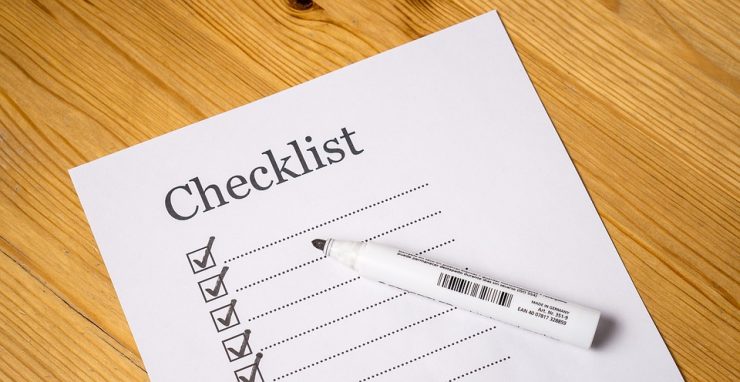Remember all those career fests and fairs during school where everyone emphasized on the importance of a good resume? How many times did our career counsellor say to us, “A good resume is the key to getting your dream job”? Quite a few. Quite a few!
You’re probably wondering why we’re taking this trip down memory lane. Well, my dear influencer, we’re here to tell you that the good old advice about having a solid resume still holds true. Except, now it’s has a fancy new name – ‘Media Kit’.
What is a media kit, you ask? Think of it as a happy union between your portfolio and your resume. This sheet of paper (or a powerpoint presentation) is your opportunity to showcase your work, the campaigns you’ve done, the brands you’ve worked for, and the content you’ve created. Like we said before, it is an influencer’s resume that tells the brands what you’re made of.
Your media kit is your first impression on busy minds and the ever forgetful brand managers who view hundreds of them while on the hunt for the right influencer. So get ready to put your best media kit forward by including these 5 essentials, and we promise you’ll never be overlooked!
1. Bio
You’re the influencer here, the one who’s likely to become the spokesperson for the brand, so it’s important that they know you. Start by telling them about your personality – the things you’re passionate about, your hobbies, interests, and what drives you. This is really important because the brands need to see if your personality is in line with their image.
Next, include your skills and areas of expertise. For instance, if you’re pitching to a mountaineering brand, telling them of your past trekking experience will only increase your stock. Also, mention your strong points. If you’re better at videography than still photography, let them know. If you’ve been published on a variety of blogs, mention it. These little details go a long way in establishing your experience and credibility in the industry.
Your bio should also have a statement of purpose. Yep, that thing you wrote for your college applications, except slightly different. Mainly you need to cover two points – Why you’re fit to work for the brand and what unique perspective you’re bringing to the table. And with that, we believe you have a strong bio to present to brands.
2. Analytics
Numbers speak for themselves, and hence, it’s important to include details about analytics concerning each of your social media platforms. And, no, just talking about the number of followers you have isn’t enough. Include stats related to ROI, engagement rates, impressions, monthly page views, Google pagerank, and any other details you may have.
This may sound a little daunting, especially if you’re an amateur influencer but don’t worry because social media sites and Google Analytics make all this really easy by presenting you all your statistics in a concise and easy to understand manner.
While simply writing them also works, if you want to get a little fancy and create more impact, you can even present your data in the form of pie charts and graphs, especially if you want to show how your reach has grown with time. And make sure you attach screenshots of your insights to prove authenticity.
3. Audience Insights
When a brand hires you as an influencer, it’s primarily because they’re trying to reach out to a wider audience. So, they will need information on the kind of audience you have, and you should have this information ready upfront. The parameters that you must include are:
- Gender – How many of your followers are predominantly male or female
- Age: The predominant age groups of the people following you, and
- Geography: What part of the country or world your followers are from
If you want to go more in detail, add their median incomes, level of education, relationship status, and ethnicity. You can get all this information directly from Google Analytics and the insights provided by each social media site individually. If you want to go above and beyond the usual, you could even provide psychographics obtained through Google Analytics (they provide key points like your audience’s interests, affinities, etc) and customer surveys to show your audiences’ mindset (their aspirations, hobbies, ambitions, etc.) and the list goes on.
All this will go to show the brand how well you know your audience. It will also help them see, in a snapshot, whether you’re a good fit for the group of people they’re targeting.
4. Your Services
A really important section, here is where we get down to the real business end of things. Start by listing out all the platforms you’re active on, for instance Instagram, Facebook, Twitter, Snapchat, YouTube or a blogging site. You should also mention the ones you’re most dedicated to and the ones that are secondary and work as supports to your other platforms.
Next, mention the kind of collaborations you do – guest blogging, sponsored posts, social media takeovers, brand mentions. Basically, talk about any particular kind of content or strategy you specialize in. When you mention these, also drop a line or two about the brands you’ve collaborated with and how successful they’ve been.
Now, it’s time to talk about money. No one likes to go into a negotiation blindfolded, so it’s a good idea to give the brands an idea of how much you charge. If you have clearly set rates or packages, there’s nothing better, but even if you don’t, simply give ballpark figures so the brands know what they’re getting into financially.
5. Portfolio and Pictures
A word of advice to all influencers: Invest in getting good headshots clicked! They add more value to your media kit and help you stick in the mind of a brand representative looking through hundreds of kits a day. Along with your headshot, add all kinds of visual content such as screenshots of your website, posts that got a lot of engagement, and other things that you think put across your essence effectively. And, since we’re on the topic of visuals, also keep in mind that an aesthetically pleasing and well thought out presentation will get you a lot more calls than a drab or messy one.
To finish off, add your contact details: email, phone number, agent details (if you have one). Then, link all your social media platforms, and voila, you have a media kit ready and are all prepped for business. Now all you gotta to do is continue being awesome and send out those kits to any brand you’ve ever wanted to work with!













